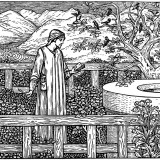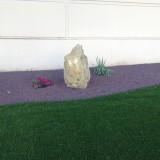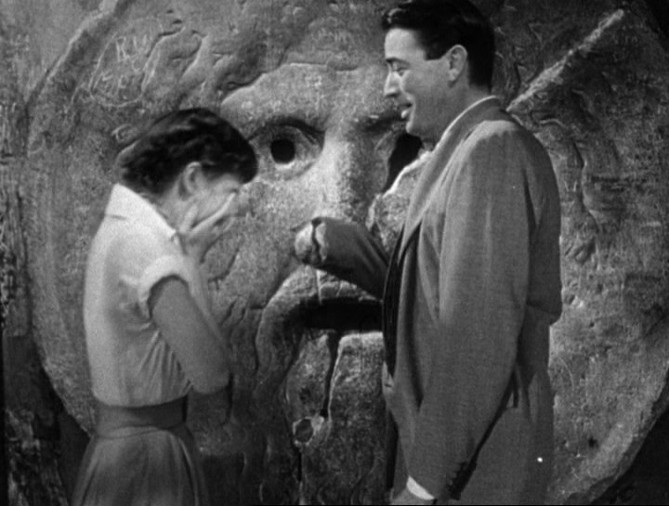
One of the issues of our time that keeps me awake at night is the loss of mnemonic systems, especially ones that make use of the physical world. The more we depend on computers, especially mobile phones, the more we will lose the ability to remember things and do stuff without staring at a screen. My underutilized music degree taught me about the Guidonian hand, a method medieval monks used in the days before musical notation software. The OnMusic Dictionary describes it as,
The first system of learning music developed in the 11th century by Guido d’Arezzo. He assigned each note a name, Ut, Re, Mi, Fa, sol, and La (thus the origin of solfeggio), and designed the system of placing notes on horizontal lines to notate pitches (thus the origin of the staff). The Guidonian hand is another of his inventions, it is a system of assigning each part of the hand a certain note, thus, by pointing to a part of his hand, a group of singers would know which note was indicated and sing the corresponding note.
Here’s a video describing the method in more detail:
Should you want to learn a handy and similar method of using your hands for mathematical calculations there’s a whole video channel devoted to a method popular in India. Please enjoy this room full of kids demonstrating the Indian method:
I distinctly remember, in school, being discouraged from using my hands for math. Now I can’t do anything without Steve Job’s infernal gadget. I wonder if, when we’re finished with our home restoration work, anyone would be interested in a musical and mathematical “non-digital digits” camp for adults at the Root Simple compound? We’ve got to take our skills back from these Silicon Valley memory vampires.
Support Root Simple
Organic Mushroom Farming and Mycoremediation: Simple to Advanced and Experimental Techniques for Indoor and Outdoor Cultivation. In Organic Mushroom Farming and Mycoremediation, Cotter not only offers readers an in-depth exploration of best organic mushroom cultivation practices; he shares the results of his groundbreaking research and offers myriad ways to apply your cultivation skills and further incorporate mushrooms into your life―whether your goal is to help your community clean up industrial pollution or simply to settle down at the end of the day with a cold Reishi-infused homebrew ale.






Yes! Let’s take back our memories! These days, I force myself to do basic arithmetic without gadgets just for practice. But the real problem is forgetting things, and forgetting that I was supposed to remember anything in the first place (until I get home without the the thing I was supposed to be remembering, doh). How do we exercise a memory muscle if we can’t remember to do it? Sigh.
Thankfully memory tricks are easy to learn. The book Moonwalking with Einstein is a fun introduction to the techniques. And I hope you are doing well.
I learned multiplication on my fingers. That Indian method looks fascinating. I’m going to have to find a slower method to figure that one out.
Maps and knowing where you are without a GPS—I still like to write down directions.
I’ve gotten so addicted to my phone that I’ve forgotten how to get around without it.
My husband has GPS or something on his phone which I suppose might come in handy although not around here, because there isn’t cell service for miles and it’s pretty spotty throughout northern New England anyway. As for me, I’m still firmly in the map camp because I’ve got to be able to visualize where I’m going. I do find on-line detailed maps like Google really helpful in order to get a birds-eye view of where we need to go; it’s hard to find paper street maps with that level of detail anymore.
Your statement about mnemonic systems that make use of the physical world has me thinking about certain declarations I make while teaching Qigong. I suggest that one thing we are doing is “turning our bodies into meditation devices,” especially as we anchor the attention in the here-and-now, by deliberately noticing and surrendering to the gravitation pull of the Earth. “… and we can choose to imagine that pull as a kind of embrace——the Earth just won’t let us go!” I open my classes with “Aligning between Earth and Sky,” so that, as we relax into Gravity, we ungrip the muscles that encase the spine, allowing the bursae between the vertebrae to plump up with fluid. This plumping edges the vertebrae apart; the net effect is that we get (oh, so subtly) taller, “rising toward the Sky, as though yielding to the gravitational pull of countless celestial bodies.” Since we (our bodies) have a 24/7 relationship with both Earth and Sky, we are already and ever part of a ready-made mnemonic system to free ourselves from the tyrannical conditioning of the mind, that would keep us ruing the past and fretting about the future. It’s a matter of remembering to remember.
PS: Love the reminder of the Guidonian Hand. More recently, I’ve seen the hand used as a model to demonstrate structures of the brain. (Just where is that amygdala anyway?) And that spiraling through the hexachords shown in the video could be modified for mastering the arrondissements of Paris, n’est-ce pas?
Exactly. Your Qigong classes are especially important when we’re all so glued to screens most of the day. Funny how our Silicon Valley overlords have made a business model out of mind/body dualism. I’m sure much of what you do is just about “grounding” people.
And are you suggesting a trip to Paris as a sequel to the tour of the red car property you gave us the other day?
Interestingly I learned basic math with my hands and thus, I count on base 5! (very inconvenient, but it is what it is).
Plato, who lived in a time when information technology had advanced enough to actually write things down, distrusted it profoundly. It’s good to know that everything changes but we humans 😉
http://myweb.tiscali.co.uk/wordscape/museum/plato.html
Thank you for bringing up this passage. Socrates via Plato well understood that writing would cause the loss of oral culture. Ironically, of course, we have this passage via writing. But it’s a reminder that we need to ponder the unintended consequences of new technologies.
Wow, this launched me onto a two-hour YouTube-tour on learning mathematics tricks. Wonder why we don’t teach kids these stuff in Western countries
We’re probably too enamored with our calculators and, now, smart phones.
How did I miss this post when it was published?
My grandmother, who died at 99, was still balancing her checkbook every month without a calculator until she was in her mid-90’s, at which point Mom took over that job for her.
I have never been good at math, but I’ve learned to be terrific at arithmetic. (The difference, according to me, is that “arithmetic” consists of adding, subtracting, multiplying and dividing numbers. “Math” on the other hand, involves the unnatural marriage of numbers and letters which inevitably leads to abominations like algebra). I figured out that I can manipulate large numbers in my head by breaking them into parts, multiplying/dividing/adding those parts individually, then combining the end products for the final answer.
A few years ago, I mentioned this to a high school math teacher – we were stuck working all day at one summer fair or other – and she was astounded that I had worked this out for myself without the intervention of an expert, i.e. a math teacher. I told her that it was the only method that made sense to me. I try not to think too deeply about it for fear the magic will disappear and it won’t work for me any more.
Wow. How fascinating. I’d never heard of the Guidonian hand! And I must learn more about this math-on-your-hands-business. I could use that…
Okay, how’s this for weirdness: I’d never heard of the Guidonian Hand before reading your post earlier today….and then I was putting together a book display at the library where I work and happen to open a book AT RANDOM to a page with an illustration of the Guidonian Hand! How crazy is that?!? It was in The Other Classical Musics: Fifteen Great Traditions (ed. Michael Church). Weird….